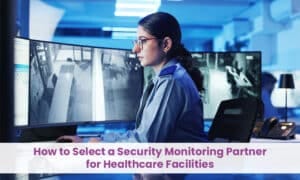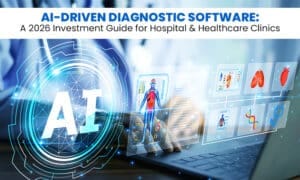
The healthcare industry is undergoing a digital transformation, and healthcare providers—whether solo practitioners or large hospital chains—are under pressure to modernise operations without compromising patient care. In this evolving landscape, choosing the right Hospital Information Management System (HIMS) is not just a technological upgrade—it’s a strategic decision that directly impacts efficiency, compliance, and patient satisfaction.
An effective HIMS can centralise workflows, minimise errors, boost staff productivity, and enhance the patient journey. But with countless options in the market, selecting the right solution involves more than just comparing feature lists. It requires clear insight into your facility’s specific needs, long-term goals, and the scalability of the system you’re investing in.
This comprehensive HIMS buying guide is designed for healthcare decision-makers at every level—clinic owners, hospital administrators, IT heads, and multi-facility executives. We’ll walk you through the most critical hospital management software questions, show you how to choose HIMS software that fits your environment, and explore the best HIMS software features to look for in 2025 and beyond. Whether you’re starting small or managing a growing network, this guide will support smarter, ROI-driven hospital software decision-making.
Assess the Scope of Your Healthcare Facility
Before diving into a list of features or comparing vendors, it’s vital to first understand the operational scope and complexity of your healthcare establishment. Whether you’re managing a solo clinic, a multi-speciality practice, or an expanding hospital network, aligning your HIMS investment with the scale and strategy of your organisation is a cornerstone of smart hospital software decision-making.
Every healthcare provider functions uniquely. A solo clinic may prioritise easy-to-use, budget-friendly tools that support basic administrative functions and clinical documentation. On the other hand, a multi-speciality hospital or chain of clinics needs a hospital management software solution that enables real-time collaboration across departments, centralised billing, shared patient data access, robust security protocols, and seamless coordination between facilities.
This stage of the process is often underestimated, yet it is essential in defining the right framework for evaluating any software solution. A clear understanding of your structure allows you to map your actual workflow against available functionalities, ensuring that the solution you choose is not only feature-rich but also operationally compatible.
Understanding the current and future structure of your healthcare practice ensures that you do not overinvest in a system that’s too complex for your needs—or underinvest in one that limits your growth.

Speciality-Specific Features & Customisation
No two healthcare specialities operate the same way. The best HIMS software features are those that offer deep customisation and cater to specific medical disciplines. For example, an ophthalmology clinic will have different documentation and workflow requirements compared to a cardiology centre.
Ask the following hospital management software questions:
Does the system offer customisable templates for various specialities?
Can it be tailored to match the unique patient journey and internal workflow?
Are user roles and access rights flexible to accommodate multiple departments?
By selecting a system that aligns with your speciality, you not only improve workflow but also increase staff productivity and patient satisfaction.
Interoperability & Integration: The Cornerstone of Scalable Hospital Software Decision-Making
In today’s data-driven healthcare environment, no system can function in isolation. Most healthcare facilities rely on a wide range of digital platforms—laboratory information systems (LIS), radiology and imaging tools (PACS), pharmacy software, electronic billing modules, and even government health portals. Choosing the right hospital management software means selecting a solution that doesn’t just operate independently but works seamlessly with all existing and future systems.
A critical part of the HIMS buying guide is understanding the interoperability capabilities of the solution you are evaluating. Simply put, interoperability is the system’s ability to share, interpret, and use data across other healthcare and administrative platforms in real time. It plays a key role in improving care coordination, eliminating redundant data entry, and ensuring smooth operations across departments.
This aspect is especially vital when considering how to choose HIMS software for growing setups such as multi-speciality hospitals or clinic chains. Without solid integration capabilities, even the best HIMS software features may fall short in supporting the complete patient journey—from admission to discharge and billing.
Key Hospital Management Software Questions to Ask About Integration:
• Can the HIMS integrate effortlessly with existing software like LIS, PACS, EMR, and pharmacy management systems?
Seamless communication with your current tools avoids data silos and ensures end-to-end visibility into patient care.
• Does the solution allow for future integrations with insurance portals, government health registries, or public health databases?
Future-proofing your investment is essential for long-term adaptability in compliance and reporting.
• Is the software compliant with industry-standard protocols such as HL7, FHIR, DICOM, or API-based connections?
Support for globally recognised standards enables better scalability and faster integration cycles.
Choosing a system that enables full interoperability empowers your healthcare staff with accurate, real-time information across every touchpoint. It reduces manual errors, saves administrative time, and delivers a more connected, satisfying experience for patients and providers alike.
Compliance & Data Security
Healthcare data is sensitive and regulated. Your hospital management software must comply with national and international standards to ensure patient privacy and avoid legal complications.
Key compliance and data protection questions include:
Is the HIMS compliant with HIPAA, NABH, GDPR, and other regulatory standards?
Does the software offer role-based access, data encryption, and audit trails?
What are the backup, disaster recovery, and breach notification protocols?
In your hospital software decision-making process, data security and regulatory compliance must be non-negotiable. A breach could harm both patients and your facility’s reputation.
User-Friendliness and Training Support
When considering the best HIMS software features, usability should be a top priority. Even the most advanced hospital management software is ineffective if your team struggles to navigate it. Ensure the system is intuitive for both clinical and administrative staff, with role-based dashboards and smart workflows.
As part of your hospital software decision-making, assess whether the vendor provides hands-on onboarding, continuous training, video tutorials, and real-time support. These are critical elements in any reliable HIMS buying guide. A user-friendly system with robust training ensures smoother adoption and long-term success in your hospital management software implementation.
Reporting & Analytics for Better Decision-Making
One of the most valuable features of any hospital management software is its ability to deliver meaningful analytics. A modern HIMS must go beyond basic record-keeping and offer real-time, data-driven insights for smarter hospital software decision-making.
Key Questions to Include in Your HIMS Buying Guide:
Does the HIMS generate real-time and historical reports?
Can dashboards be customised to track specific KPIs?
Does it leverage AI or machine learning for predictive alerts?
In any HIMS buying guide, robust analytics is critical. It’s a core element of how to choose HIMS software that aligns with operational goals and supports long-term success through actionable insights.

Deployment Type: Cloud vs On-Premise
Deployment method impacts cost, accessibility, and scalability. Cloud-based systems offer anytime-anywhere access, automatic updates, and lower hardware dependency. On-premise systems offer better control and might suit organisations with specific regulatory or infrastructure needs.
Ask:
Does our facility prefer cloud-based or on-premise deployment?
Are there hybrid options that offer flexibility?
What are the maintenance responsibilities and hidden costs involved in each option?
A good hospital management software must align with your existing infrastructure and future IT plans. Understanding these aspects is essential to sound hospital software decision-making.
Vendor Support & Service Reliability
Choosing a HIMS solution isn’t just about features—it’s also about the long-term support behind it. Reliable vendor support is vital to ensure the hospital management software continues to deliver seamless performance, reduces downtime, and adapts to your growing operational needs.
Why Vendor Support Matters
Strong after-sales support ensures your hospital software decision-making leads to long-term efficiency and uninterrupted care delivery. Support gaps can lead to system failure or compliance issues.
Key Questions to Ask:
Is 24/7 support offered via phone, chat, or email?
How often are updates and bug fixes rolled out?
Are SLAs (Service-Level Agreements) defined clearly?
A trustworthy partner makes a significant difference in your HIMS buying guide journey.
Return on Investment (ROI) & Cost Transparency
When evaluating a HIMS, it’s essential to consider not just the price tag, but the value it delivers. Hospital management software should offer a clear ROI by improving workflow efficiency, reducing staffing redundancies, and enhancing patient outcomes. Ask about all costs—setup, licensing, training, and ongoing maintenance. Explore how the system reduces manual paperwork, accelerates billing cycles, and improves inventory control. These features directly support higher revenue generation. Transparent pricing structures and a proven ROI model strengthen your hospital software decision-making process, making it easier to align investments with financial and operational goals.
Reviews, Demos & Peer Recommendations
Reviews and demos play a vital role in any HIMS buying guide. Before committing, explore the vendor’s track record through case studies, client testimonials, and peer feedback. These resources help address critical hospital management software questions like: Has the vendor served facilities similar to ours? and Can we access real-world examples of their impact? Request a live demo to observe the interface, features, and support in action. Vendor responsiveness during the inquiry phase reveals a lot about future engagement. This step is crucial when deciding how to choose HIMS software that supports long-term hospital software decision-making.
Make the Smarter HIMS Decision
Choosing the right HIMS impacts every layer of your healthcare operations. Whether for solo clinics or large hospital networks, knowing how to choose HIMS software means evaluating needs, vendor strengths, and long-term fit.
This HIMS buying guide helps you ask the right hospital management software questions, identify the best HIMS software features, and make informed, confident decisions.
The right system enhances workflows, supports growth, and improves care delivery.





